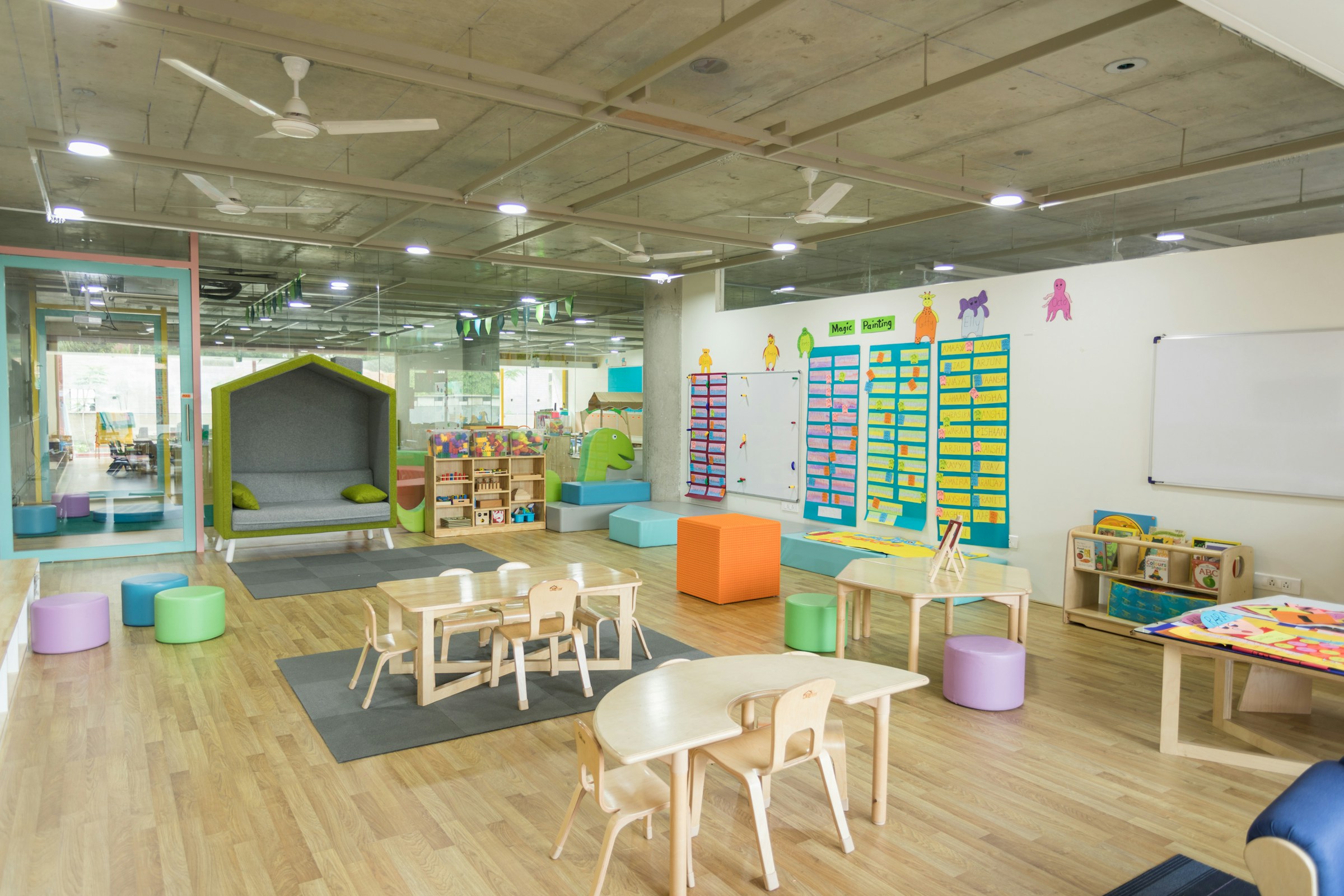More than 49 million students were enrolled in public elementary and secondary schools as of fall 2021, according to the Digest of Education Statistics. Coincidentally, that number (the “49” in 49 million) matches the average age of a main instructional school building in the U.S., according to the National Center for Education Statistics. More alarming, nearly four in 10 schools (38%) were built before 1970—and half of those have never had a major building renovation or addition.
Clearly, too many of the nation’s school districts are having to make it work with less-than-ideal educational facilities. But at what cost to student performance and staff satisfaction?
Newly released findings from a 28-school research study by Drexel University and Perkins Eastman reveal a strong correlation between the quality of school building environments and key educational indicators like test scores, graduation rates, enrollment, teacher retention—even community health and wellness.
The study, “Addressing a Multi-Billion Dollar Challenge” (140-page PDF download at BDCnetwork.com/2024-school-study), investigated the differences between modernized and non-modernized elementary, middle, and high schools—17 modernized, 11 non-modernized—throughout Washington, D.C., and Baltimore.
The primary finding: When measuring the educational adequacy of schools, modernized schools outperformed non-modernized schools by a wide margin, representing 13 of the top 15 performers, including the top 11 schools. The research team looked at factors such as instructional space, safety and security, environmental quality, extended learning, assembly, community, organization, and civic presence.
Drexel and Perkins Eastman hope the study will inform school districts on how best to invest limited CapEx funds. Some recommendations from the research:
Upgrades that enhance indoor environmental quality—air quality, lighting, acoustics, and thermal comfort—can positively impact students’ ability to focus and learn.
However, they warn that small incremental upgrades over time to items like HVAC systems can lead to potential detrimental impacts to the learning environments (e.g., unsightly conduit, blockage of windows).
These five areas offer the greatest opportunity for improvement: instructional space ambiance, exterior presence, safety and security, community assembly space, and main office location.
Overall, modernized schools better serve their community by being able to host initiatives like health clinics, food distribution programs, and public recreational facilities.
Download the full report at: BDCnetwork.com/2024-school-study.
Related Stories
| Aug 11, 2010
Jacobs, Hensel Phelps among the nation's 50 largest design-build contractors
A ranking of the Top 50 Design-Build Contractors based on Building Design+Construction's 2009 Giants 300 survey. For more Giants 300 rankings, visit http://www.BDCnetwork.com/Giants
| Aug 11, 2010
Gilbane, Manhattan Construction top BD+C's ranking of the nation's 50 largest K-12 school contractors
A ranking of the Top 50 K-12 School Contractors based on Building Design+Construction's 2009 Giants 300 survey. For more Giants 300 rankings, visit http://www.BDCnetwork.com/Giants
| Aug 11, 2010
Arup, SOM top BD+C's ranking of the country's largest mixed-use design firms
A ranking of the Top 75 Mixed-Use Design Firms based on Building Design+Construction's 2009 Giants 300 survey. For more Giants 300 rankings, visit http://www.BDCnetwork.com/Giants
| Aug 11, 2010
Structure Tone, Turner among the nation's busiest reconstruction contractors, according to BD+C's Giants 300 report
A ranking of the Top 75 Reconstruction Contractors based on Building Design+Construction's 2009 Giants 300 survey. For more Giants 300 rankings, visit http://www.BDCnetwork.com/Giants
| Aug 11, 2010
Best AEC Firms of 2011/12
Later this year, we will launch Best AEC Firms 2012. We’re looking for firms that create truly positive workplaces for their AEC professionals and support staff. Keep an eye on this page for entry information. +
| Aug 11, 2010
Clark Group, Mortenson among nation's busiest state/local government contractors, according to BD+C's Giants 300 report
A ranking of the Top 40 State/Local Government Contractors based on Building Design+Construction's 2009 Giants 300 survey. For more Giants 300 rankings, visit /giants
| Aug 11, 2010
Lincoln High School
Tacoma, Wash.
Lincoln High School in Tacoma, Wash., was built in 1913 and spent nearly a century morphing into a patchwork of outdated and confusing additions. A few years ago, the Tacoma School District picked Lincoln High School, dubbed “Old Main,” to be the first high school in the district to be part of its newly launched Small Learning Communities program.
| Aug 11, 2010
Call for entries: Building enclosure design awards
The Boston Society of Architects and the Boston chapter of the Building Enclosure Council (BEC-Boston) have announced a High Performance Building award that will assess building enclosure innovation through the demonstrated design, construction, and operation of the building enclosure.
| Aug 11, 2010
Portland Cement Association offers blast resistant design guide for reinforced concrete structures
Developed for designers and engineers, "Blast Resistant Design Guide for Reinforced Concrete Structures" provides a practical treatment of the design of cast-in-place reinforced concrete structures to resist the effects of blast loads. It explains the principles of blast-resistant design, and how to determine the kind and degree of resistance a structure needs as well as how to specify the required materials and details.







